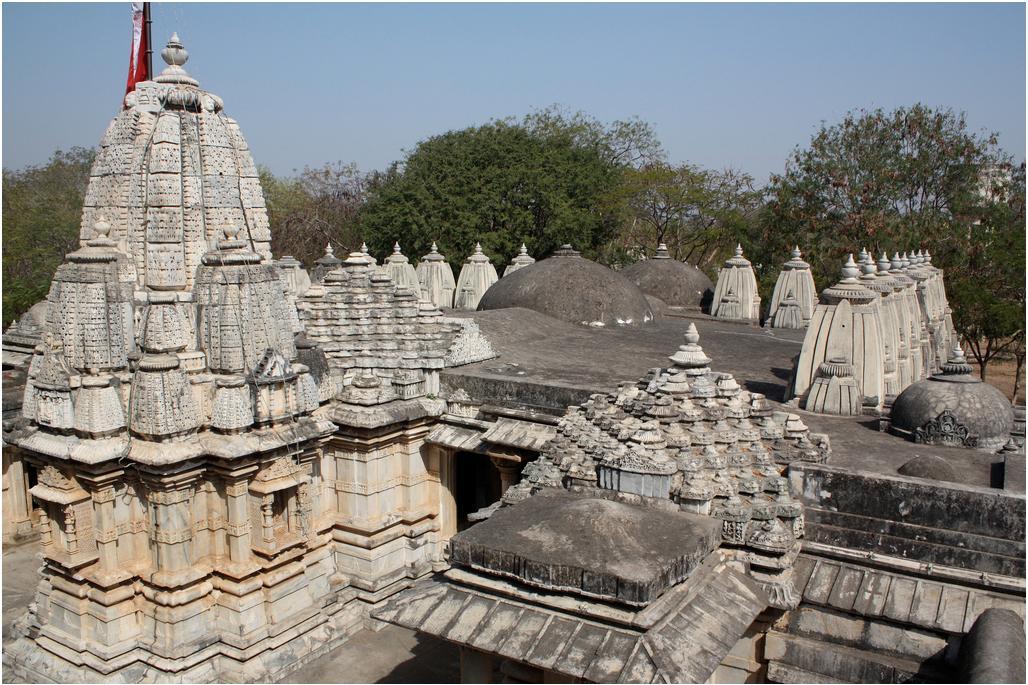
Jain Temples at Kumbharia
The following article is compiled from two chapters of the book Jaina Temples from Western India by Harihar Singh (Varanasi 1980, pp. 34f. and 107f.).
1. The historical site of Kumbharia
Kumbharia is situated about fourteen miles southeast of Abu Road and one and a half miles from Ambaji in the Banaskantha district of Gujarat. Once the whole region from Ambaji to Kumbharia was known as Ārāsaṇa, but now both the sites are isolated from each other and are going by their own names, and it is not yet certain when and by whom they were founded. It is equally difficult to say who founded Ārāsaṇa and when it was destroyed.
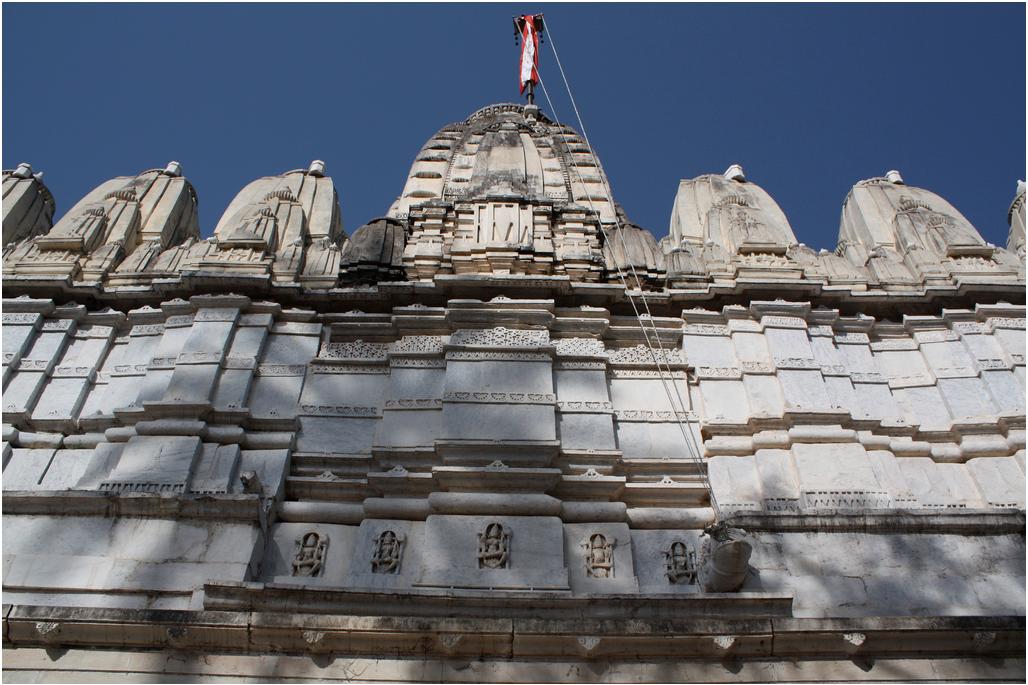
In the inscriptions found in the Jaina temples at Kumbharia, Ārāsaṇa is variously described as Ārāsaṇa, Ārāsana, Ārāsaṇā, Ārāsaṇākara, Ārāsanagara, Ārāsanākara, Ārāsaṇamaṇḍala and Ārasaṇa(ṇā)kara. It is said that Ārāsaṇa derived its present name from 'ārasa' purporting to marble, the mines of which are found in abundance on the Ārāsura mountain of Ambaji and Kumbharia.
[1] According to Dave, however, Ārāsura or Ārāsaṇa came to be known after an Asura (demon), who was killed by the cakra of Ambikā consisting of a thousand ārāsas (spokes). [2] Ārāsana adopted its present name since early times, [3] and it continued to be known by this name or some of its variants as late as 1618 A.D. [4]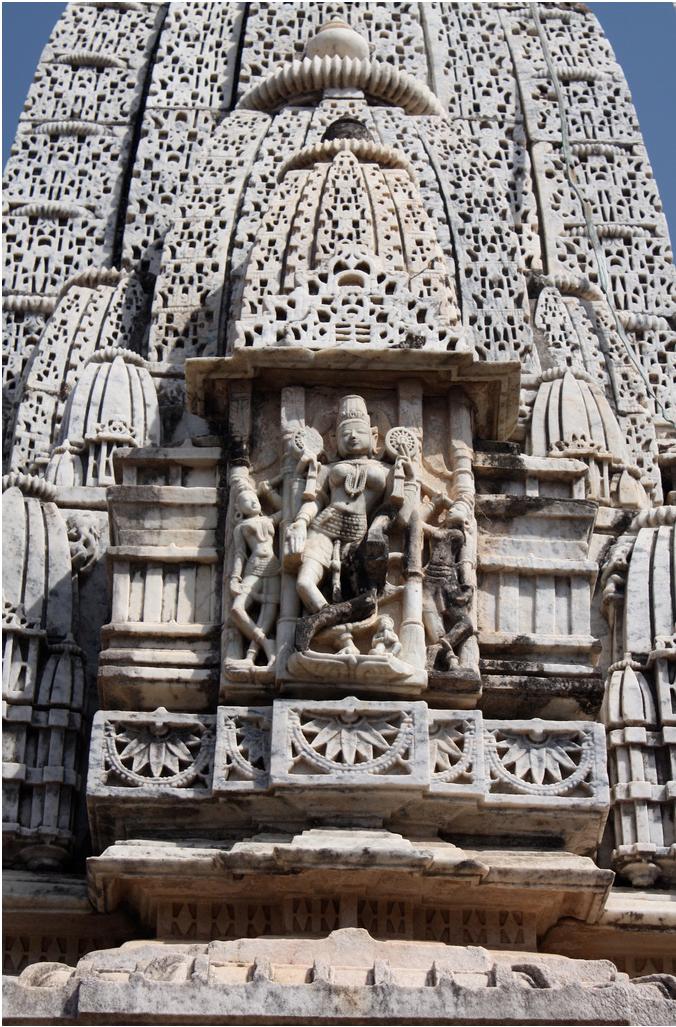
As regards the name of Kumbharia, Forbes has suggested that it was founded by Rāṇā Kumbhā of Chitor and was so called after his name.
[5] Rāṇā Kumbhā flourished from A.D. 1438 to 1459, whereas the city of Ārāsaṇa is known by this name as late as 1618 A.D. This obviously shows that Kumbharia was not named after Rāṇā Kumbhā, and the destruction of the old city must have taken place after 1618 A.D. Viśālavijaya is of the opinion that when Mewar was invaded by Akbar, some king of this region, Kumbhā by name, fled to Ārāsaṇa and changed the name of the city to Kumbharia. [6] According to Tripuṭi Mahārāja, however, Kumbharia derived its present name from 'kumbhāras', i. e. potters, who were inhabiting there. [7]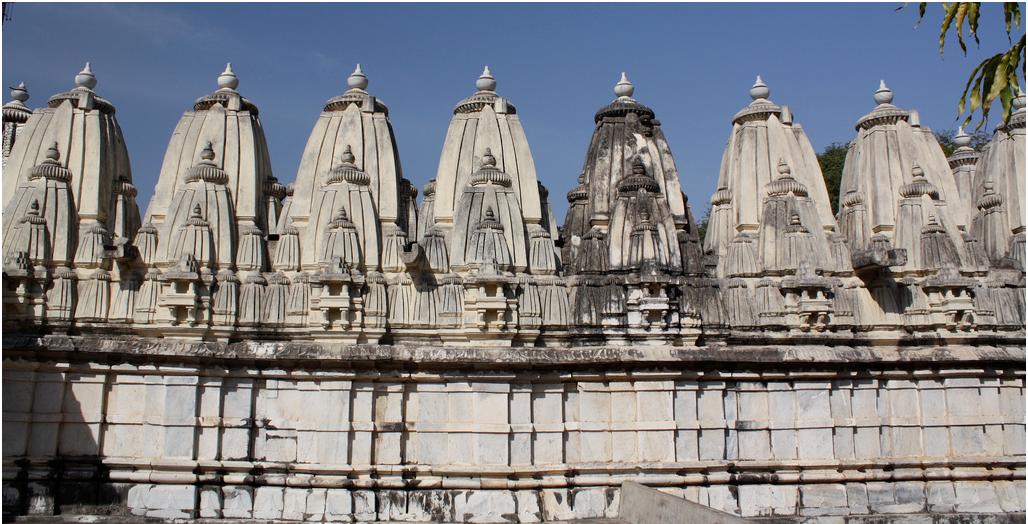
Ārāsaṇa was rich in natural resources. According to the Jaina tradition, here were mines of gold and silver.
[8] When Ambikā became pleased with Vimalaśāha, she gave him so much wealth that he could build 360 temples to Pārśvanātha. [9] A similar story is said about Pāsila, the builder of the Neminātha temple there. [10] It was also famous for the quality of its marble throughout Gujarat, as many temple-builders such as Vimala, Vastupāla, Tejapāla and Kumārapāla used the 'ārasa' (marble) of this place. [11]
The antiquity of Ārāsaṇa as a Hindu site may be traced to the most remote period, as here was offered in vicarious sacrifice the hair of the infant Śrī Kṛṣṇa, and subsequently his bride Rukmiṇī worshipped Ambādevī, when he bore her from the threatened embrace of Śiśupāla.
[12] But to the Jain as it is known from the time of Vimalaśāha, when the latter was appointed as Daṇḍanāyaka in this region. According to the Jaina tradition, Vimalaśāha obtained much wealth from Ambāmātā and constructed here 360 temples to Pārśvanātha. [13] Further, we are told that once Ambikā became displeased with Vimalaśāha and destroyed all except five Jaina temples. The traditional account is no doubt correct in that there are still five Jaina temples, but, surprisingly enough, none of the inscriptions found in the temples at Kumbharia attributes Vimalaśāha to be the builder of these temples.
The style of all the five temples also indicates a date later than the time of Vimalaśāha. However, the possibility of a Vimalavihāra at Ārāsaṇa cannot be wholly denied, as the later literary tradition definitely makes mention of one such vihāra there.
[14] Three inscriptions in the Kumbharia Jaina temples also belong to the time of Vimalaśāha. [15] Therefore, it is quite likely that there existed a Jaina temple during the time of Vimalaśāha. Dhaky has even suggested that what is now known as the temple of Śāntinātha was originally a temple of Ṛṣabhanātha built by Vimalaśāha, and that the present temple was built on an extensive scale by removing the old one. [16]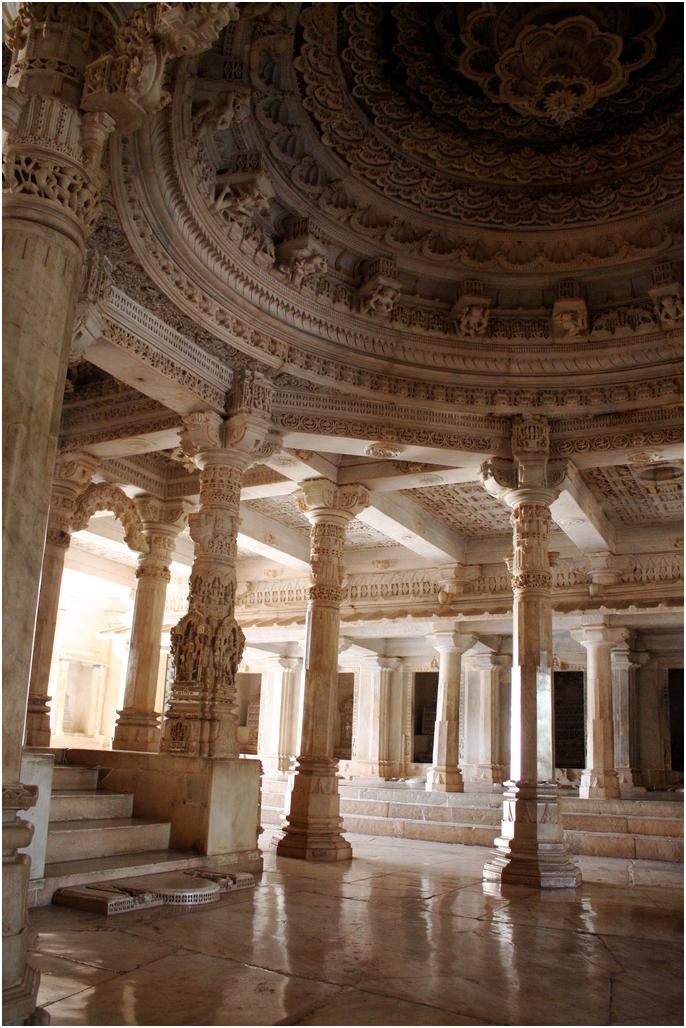
The Jaina temples at Kumbharia lie embosomed among the forest-covered hills of Ārāsaṇa, which form the south-western termination of the Aravalli range. They are oriented on the gentle slope of a shallow river-valley. The charming situation of the site and the nearness of the quarry may have been the main factor for erecting temples there. A large number of worshippers daily visit the temples of Kumbharia during day time, but as the evening darkens the valley the doors of the temples are shut up, and except for occassional birds' cry quiet dwells there during the whole night. The temples have got so much popularity for their sanctity and artistic splendour that a pilgrim or traveller bound to Ambaji also desires to visit Kumbhariaji.
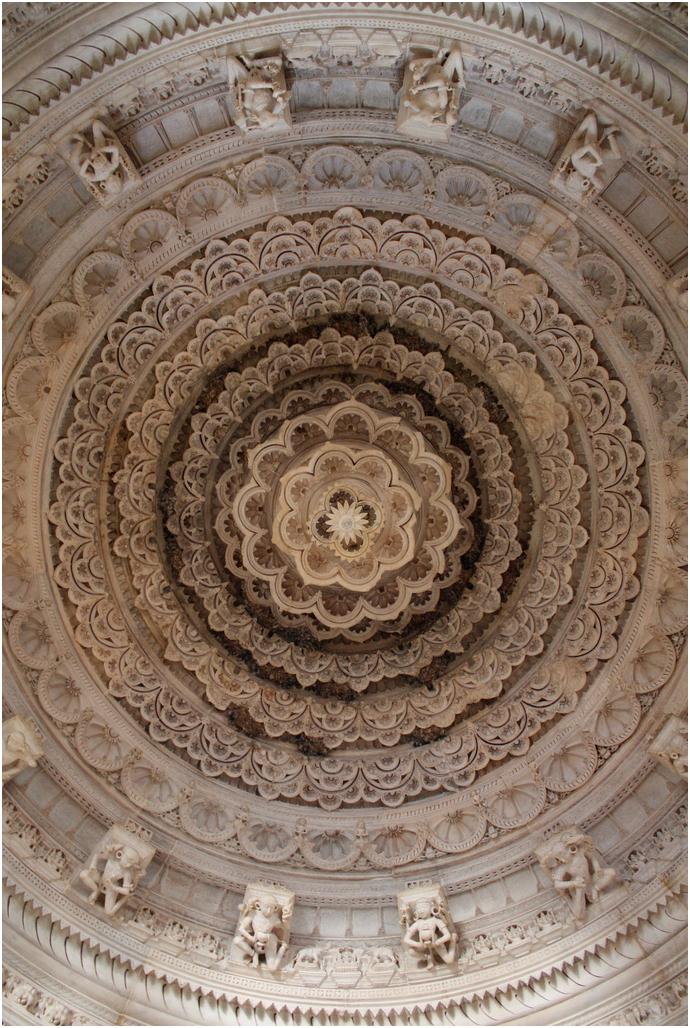
At present there is a group of six temples, all located very close to each other. Of these, five are Jaina and one is Śaiva. All the five Jaina temples come under the purview of our discussion.
2. The Jaina Temples of Kumbharia
There is a group of five Jaina temples, all built of white marble and facing north. They are nirandhāra-prāsādas, each standing on a lofty jagatī which is laid out on no specific plan but on the sloping level surfaces as the contour of the hills naturally provides. Consequently it displays more courses on the front than a rear. The jagatī is composed of hewn blocks of masonry, and its courses are do devised as to form a sort of revetment against the lateral thrust.
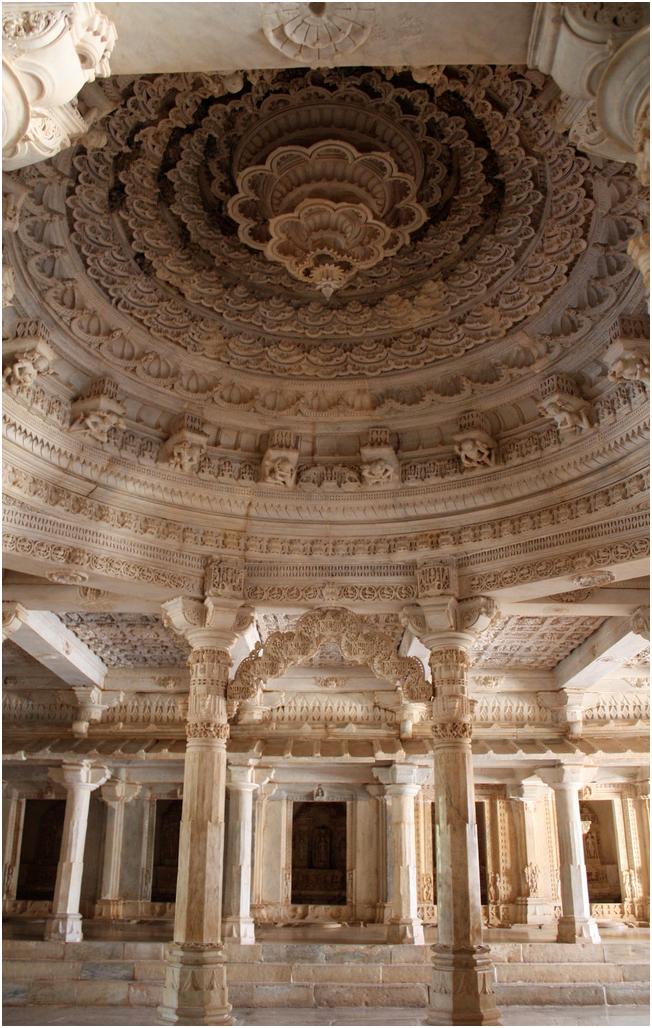
The temples are still under worship and are dedicated to Mahāvīra, Śāntinātha, Pārśvanātha, Neminātha and Sambhavanātha. The present dedication, however, seems to be incorrect, for a Tīrthamālā of 1442 A.D. attributes the dedication to Ādinātha, Śāntinātha, Neminātha, Pārśvanātha and Mahāvīra.
[17] There is no doubt about the number of shrines, but in the dedication list the name of Sambhavanātha is replaced by that of Ādinātha. It appears that the central images in some of these temples were changed during later repairs, [18] without caring for the actual dedication. This was quite likely, for the central images in all these temples are of the subsequent dates.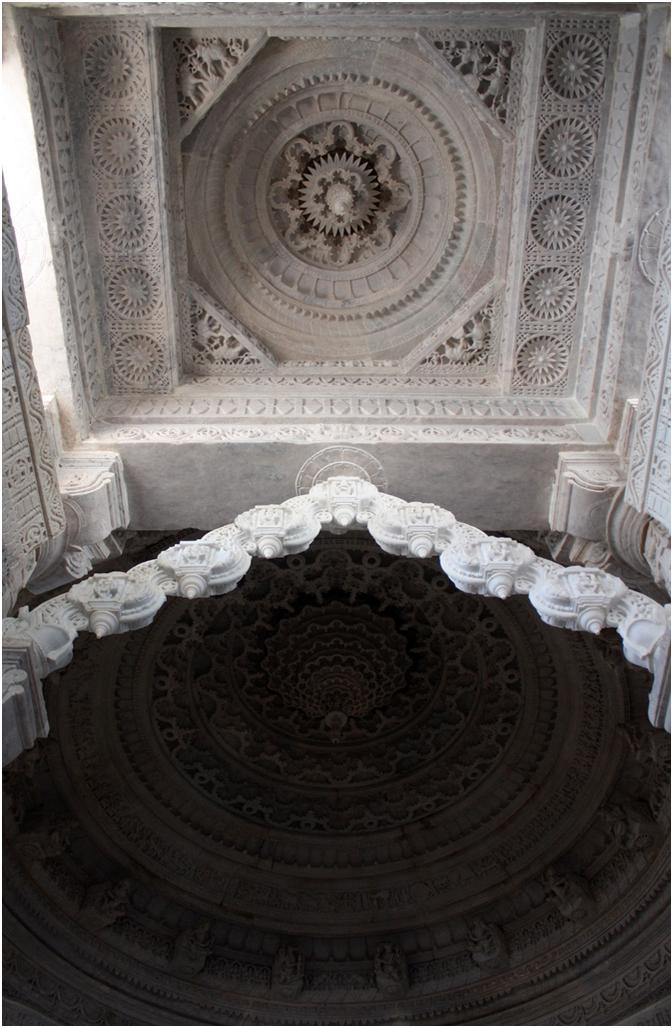
According to the inscriptions hailing from these temples, there is hardly any doubt regarding the dedication of the temples of Neminātha,
[19] Pārśvanātha [20] and Mahāvīra. [21] The dedication of the Mahāvīra and the Pārśvanātha temples is also corroborated by the iconographic testimony. In the Mahāvīra temple this is evident from an image of Siddhāyikā, the Yaksī of Mahāvīra, facing the mūlanāyaka in the sanctum. The image is located in the centre of the architrave supporting the ceiling built just above the stairway leading to the mukhamaṇḍapa. In the Pārśvanātha temple this is apparent from the remains of a seven-hooded cobra canopy over the mūlanāyaka image in the sanctum, from the appearance of the Nāga figures, instead of the usual Vidyādharas, on the points of the kolas of the gūḍhamaṇḍapa dome, and from an image of Padmāvati, the Yaksī of Pārśvanātha, represented as lalāṭabiṁba on the northern door of the gūḍhamaṇḍapa.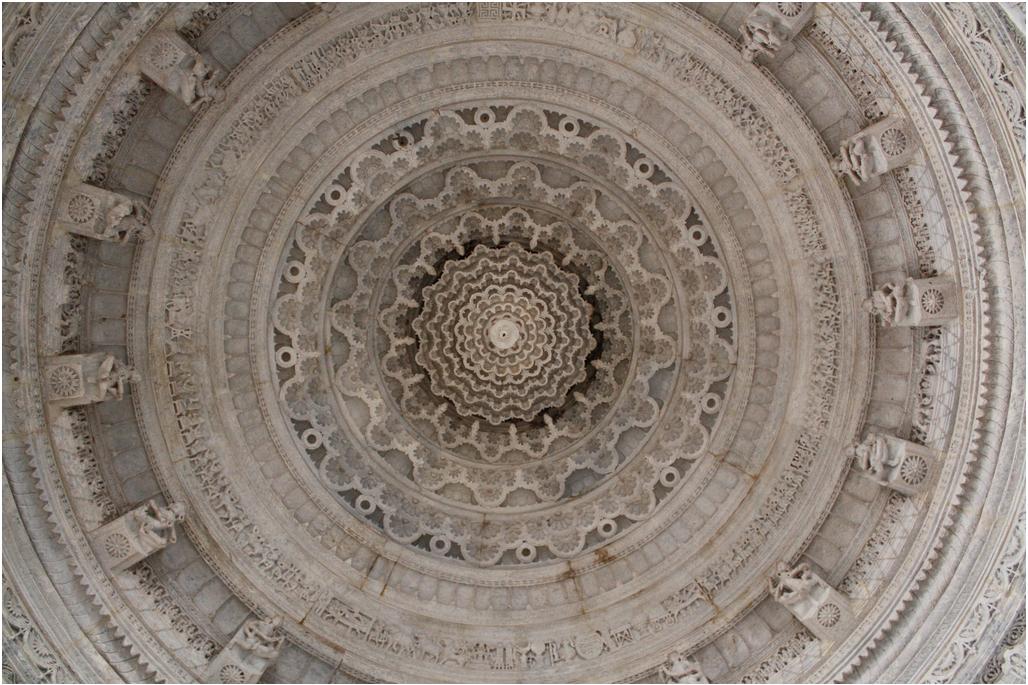
The temple of Śāntinātha seems to be originally dedicated to Ādinātha. This is clearly evident from two inscriptions found in the temple, which attribute the dedication to him.
[22] This is also supported by the iconographic evidence. The mukhamaṇḍapa ceiling in front of the gūḍhamaṇḍapa door contains an image of Cakreśvarī, the Yakṣī of Ādinātha, who is depicted facing the mūlanāyaka in the sanctum. Besides, there are two large images of Cakreśvarī and Gomukha (Yakṣa of Ādinātha) depicted in one of the side bays of the raṅgamaṇḍapa. The temple of Sambhavanātha does not bear any inscription, but there is little scope for doubt that originally it was dedicated to Śāntinātha, whose name is recorded in the Tirthamālā referred to above.Bhandakar, D. R., Progress Report of the Archaeological Survey of India, Western Circle (1905-06), Poona 1906, p. 3.
Vijayadharmasūri (ed.), Prācina Tīrthamālā Saṅgraha, vol. I, Bhavnagar V.S. 1978 (=1921 CE), p. 50, v. 27.
Jinavijaya, Kharatara Gaccha Pattavali, Calcutta 1932, p. 43; see also Viśālavijaya, op. cit., p. 64.
Dhaky, M. A., „Ārāsaṇanā be Jaina Pratimālekhonī Viśeṣavācanā“, Svādhyāya Gujarati), vol. VII, No. 2, Baroda 1971, p. 191.
An extensive restoration of these temples was made in the sixteenth century A.D. - Kalyāṇavijaygaṇi (ed.), Tapāgaccha Paṭṭāvalī, vol. I, Bhavnagar 1940, p. 244.
Ibid., Nos. 77 and 149. An inscription of 1061 A.D. engraved upon the pedestal of the sanctum image also makes the dedication to Vīra, i.e. Mahāvīra.
 Harihar Singh
Harihar Singh